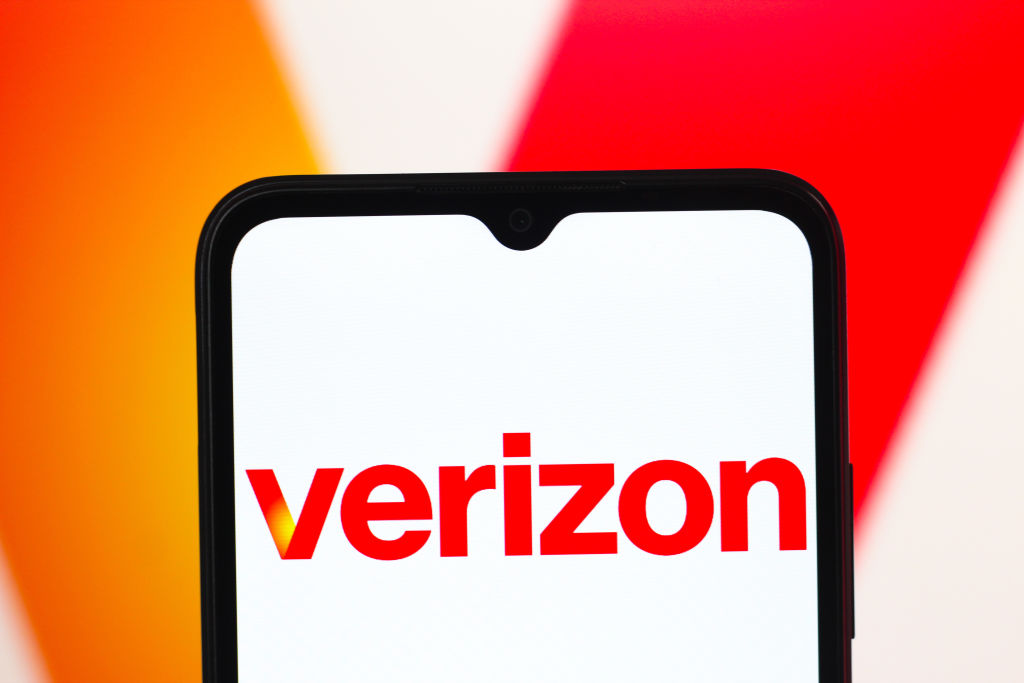5 Great Comeback Stocks
These companies are putting a troubled past behind them. The stocks are risky, but they offer big opportunities.

Everybody loves a good rags-to-riches story — particularly when buying into the story makes you rich, too. But when investors consider a riches-to-rags (and back again) story, the Horatio Alger tale takes on a cautionary tone.
Buying turnaround stocks is a tricky business. That's because companies that have had near-death experiences invariably did something terribly wrong. Whether they stumbled because of poor planning, strategic missteps or too much debt, investors can be justifiably nervous about entrusting their hard-earned cash to these companies.
Traditional yardsticks can mislead. Where price-earnings ratios are usually a key measure of a stock's value, they're largely meaningless with turnaround stocks. That's because many of these companies are losing money, so there's no earnings to plug into the ratio. Others have started posting profits, but at the early stages of the turnaround (when the investment potential is best), earnings are likely to be so modest that P/Es can seem astronomical even when the stock is relatively cheap based on the potential for profit growth.

Sign up for Kiplinger’s Free E-Newsletters
Profit and prosper with the best of expert advice on investing, taxes, retirement, personal finance and more - straight to your e-mail.
Profit and prosper with the best of expert advice - straight to your e-mail.
Spectacular rewards. Yet, if you buy one of these stocks before other investors realize that the company has rounded the corner, the rewards can be spectacular. "These are stocks that have been beaten up by the market. Because they've been burned, a lot of investors hate them,” says George Putnam, editor of the Turnaround Letter, a Quincy, Mass.–based publication that focuses on corporate comebacks. But sentiment can change quickly, pushing stocks back up, says Putnam. "As investors see the results improve, they pile back in.”
The story of U.S. Airways (symbol LCC) illustrates both the risks and the rewards of turnarounds. Investors who bought into the "turnaround” of U.S. Air in 2003, when it emerged from its first Chapter 11 bankruptcy reorganization, lost everything when the company used the bankruptcy code to reorganize again just a year later.
The outcome was different a few years later. In mid 2009, just as the Great Recession was ending, bond-ratings analysts at Standard & Poor's looked at U.S. Air's tepid cash flow and put the company on its credit-watch list. Investors, well aware that U.S. Air had gone into bankruptcy reorganization twice before, frantically dumped the shares. By July, the stock was selling for just $2 a share. But this time, U.S. Air was beginning to benefit from a turnaround in the industry and wasn't failing. The company is now merging with American Airlines, and its stock sells for $17.09 — up nearly 900% from its nadir.
To profit from a turnaround stock, you must first understand what caused the company's woes and then determine whether the steps taken are likely to solve them, says Ronald Sussman, chairman of the Turnaround Management Association, a trade group representing turnaround experts. You can't assume that a company is out of the woods just because it completed a corporate reorganization, got a new credit line or brought in new executives, he says. When the problems are complex, the solutions often are, too. It's hard to know whether systemic issues are solved.
For example, investors were sold on the potential turnaround of J.C. Penney (symbol JCP) when Apple store guru Ron Johnson was hired two years ago to revive the Plano, Tx.–based retailer, and the stock rose nearly 50%. But Penney still struggles to capitalize on fast-moving fashion trends in a hotly competitive market. Johnson was canned in April, and Penney shares are back to their pre-Johnson doldrums.
Five to bet on.
Because of the risks, experts caution investors never to gamble heavily on one turnaround stock. Still, these five turnaround tales are worth considering.
1. Atlanta-based Beazer Homes (BZH) was dealt heavy blows by the real estate crash and credit crunch. "The company was near death. It had liquidity issues, balance-sheet issues, and the housing market was moribund,” says UBS analyst David Goldberg. When Beazer first started bleeding red ink in 2007, it brought in a new chief financial officer, Allan Merrill, to fix the balance sheet and secure the financing the company needed to survive. But declining real estate values and bad debts remained so threatening that Beazer's stock slid as low as $1.25 a share in the spring of 2009. In 2011, Beazer fired its CEO and gave Merrill the top job. He's been cutting costs and making operations more efficient ever since. After six full years of losses, Beazer now expects a profitable second half in 2013. The stock sells for $19.72, but rising home sales — and sales prices — makes Goldberg believe Beazer shares could pop another 30% over the next year. (Share prices are as of June 19). (Editor's note: Concerns about rising interest rates have hit home-building stocks, including Beazer, since the publication of this column. However, unless rates rise substantially, they're unlikely to kill the market for new homes. Mortgage rates are still low by historical standards, and realtors say many buyers are paying with cash.)
2. Chiquita Brands International (CQB) has many of the qualities that Putnam likes to see in a turnaround — a strong brand name, a new CEO and a growing market, thanks to increasing worldwide interest in healthy foods. In 2012, Chiquita brought in CEO Edward Lonergan, a turnaround expert with a consumer-products background. But even before, the company had been cutting costs by tossing its avocado and grape operations, moving its headquarters to cheaper digs and laying off workers. Now focused solely on bananas, healthy snacks and salads, Chiquita posted a $2 million (5 cents per share) profit in the first quarter of 2013 versus an $11 million (24 cents per share) loss during the same period a year ago. Early this year, Chiquita refinanced most of its debt, extending maturities to 2021, which gives the Charlotte, N.C., company time to complete the restructuring plan. Putnam thinks the stock, currently $10.83, is a buy at prices under $12 a share.
3. Groupon (GRPN) is now just one of a several outfits pushing daily deals to fatigued customers, but Sterne Agee analyst Arvind Bhatia is convinced that the Chicago-based marketplace is back on the right track. When Groupon first sold shares to the public in November of 2011, investors thought the company's future was so bright that they bid the stock up more than 50%, to $31, on the first day of trading. But the company's expenses grew faster than revenues and an increasing number of competitors started offering daily deals. Groupon's shares went into a tailspin, finally bottoming last November at $2.63.
In February, Groupon dumped chief executive Andrew Mason and started looking for a new CEO. Meanwhile, investment banker Eric Lefkofsky and board member Ted Leonsis are running the company and have been telling analysts that they believe Groupon's revenues will eventually grow to $100 billion. Groupon is still losing money (after costs), but with recent improvements in sales and income from its core business, Bhatia thinks the stock, currently $7.73, could reach $9 within a year.
4. MGIC Investment Corp. (MTG) was one of the many mortgage insurers crushed by the bill for millions of foreclosed homes in the last recession. With nearly $5.3 billion in cumulative losses since 2007, the Milwaukee-based mortgage insurer was forced to raise capital in both 2010 and 2013. Today, although the firm continues to lose money, charge-offs and delinquent loans are declining. As one of the industry's few survivors, MGIC will be able to become a dominant — and profitable — player once losses evaporate, Putnam thinks. With real estate recovering, the stock, now $6.36, could go to $12 or $15, he thinks, if MGIC succeeds in turning the business around.
5. Rite Aid (RAD) become one of the nation's largest drugstore chains, with 4,623 stores in 31 states, through acquistions. But the company borrowed heavily to finance those purchases and struggled to integrate the new operations with the old. The ill-timed purchase of the Brooks and Eckerd chain in 2007 nearly was Rite Aid's undoing. In the following five years, the company lost a cumulative $5.4 billion and its stock slipped from $6 to as low as 20 cents.
Now, instead of adding stores, Rite Aid is shedding locations and attempting to make the stores it owns more profitable. In the fiscal year that ended March 2, the company posted its first annual profit since 2006 — 12 cents per share. Still heavily burdened with debt, Rite Aid remains a risky bet, says Putnam. But the greater risk also portends a potentially greater payoff. At $3.11, the stock's market value is about 10% of revenues, while key competitors CVS and Walgreens sell for 0.6 and 0.7 times sales, respectively. Putnam believes that if management can continue the turnaround, Rite Aid's share discount will narrow, and that could cause the stock price to double or triple in value over the next few years.
Get Kiplinger Today newsletter — free
Profit and prosper with the best of Kiplinger's advice on investing, taxes, retirement, personal finance and much more. Delivered daily. Enter your email in the box and click Sign Me Up.

-
 Despite Economic Uncertainty, Americans Remain Confident About Retirement, Survey Shows
Despite Economic Uncertainty, Americans Remain Confident About Retirement, Survey ShowsSaving and spending is a concern but most workers and retirees think they are on track based on a new survey.
By Donna Fuscaldo
-
 Verizon’s Free iPhone Deal: What to Know Before You Switch or Upgrade
Verizon’s Free iPhone Deal: What to Know Before You Switch or UpgradeVerizon is offering a free smartphone — including the latest iPhones — with any myPlan, plus a three-year price lock. But is it really the best deal for you?
By Choncé Maddox
-
 Why Is Warren Buffett Selling So Much Stock?
Why Is Warren Buffett Selling So Much Stock?Berkshire Hathaway is dumping equities, hoarding cash and making market participants nervous.
By Dan Burrows
-
 If You'd Put $1,000 Into Google Stock 20 Years Ago, Here's What You'd Have Today
If You'd Put $1,000 Into Google Stock 20 Years Ago, Here's What You'd Have TodayGoogle parent Alphabet has been a market-beating machine for ages.
By Dan Burrows
-
 Stock Market Today: Stocks Retreat Ahead of Nvidia Earnings
Stock Market Today: Stocks Retreat Ahead of Nvidia EarningsMarkets lost ground on light volume Wednesday as traders keyed on AI bellwether Nvidia earnings after the close.
By Dan Burrows
-
 Stock Market Today: Stocks Edge Higher With Nvidia Earnings in Focus
Stock Market Today: Stocks Edge Higher With Nvidia Earnings in FocusNvidia stock gained ground ahead of tomorrow's after-the-close earnings event, while Super Micro Computer got hit by a short seller report.
By Karee Venema
-
 Stock Market Today: Dow Hits New Record Closing High
Stock Market Today: Dow Hits New Record Closing HighThe Nasdaq Composite and S&P 500 finished in the red as semiconductor stocks struggled.
By Karee Venema
-
 Stock Market Today: Stocks Pop After Powell's Jackson Hole Speech
Stock Market Today: Stocks Pop After Powell's Jackson Hole SpeechFed Chair Powell's Jackson Hole speech struck a dovish tone which sent stocks soaring Friday.
By Karee Venema
-
 Stock Market Today: Stocks Drop Ahead of Powell's Jackson Hole Speech
Stock Market Today: Stocks Drop Ahead of Powell's Jackson Hole SpeechSentiment turned cautious ahead of Fed Chair Powell's highly anticipated speech Friday at the Jackson Hole Economic Symposium.
By Karee Venema
-
 Stock Market Today: Stocks Rise After Jobs Data Lifts Rate-Cut Odds
Stock Market Today: Stocks Rise After Jobs Data Lifts Rate-Cut OddsPreliminary data from the Bureau of Labor Statistics shows job growth was lower than previously estimated.
By Karee Venema